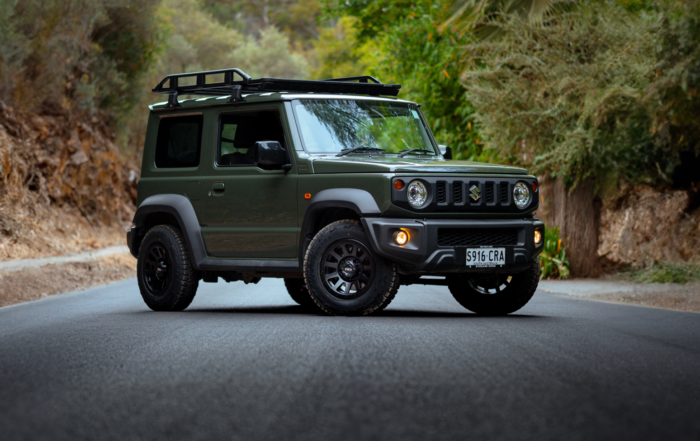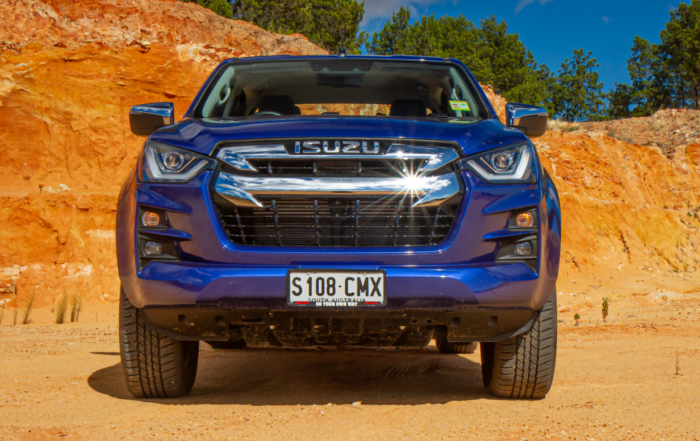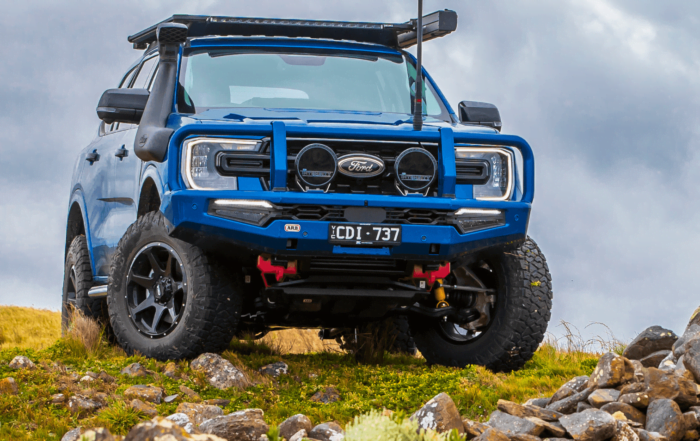2020 MR Triton GLS Premium Review
2020 MR Triton GLS Premium Review
The last MR Triton I reviewed was an MY19 GLS with a six-speed manual gearbox and I wrote at the time, in a round-a-bout sort of way, ‘great 4X4 but I wouldn’t buy the manual’.
Since then the MY20 MR Triton range has been released, with a handful of upgrades for the mid-spec models that has seen a rear diff lock added to the middle of the range GLX+ and GLS, and the air-recirculating roof pod found in the GLS and GLS Premium added to the GLX+.
Mitsubishi’s awesome Super Select system that offers drivers the choice of AWD on hard surfaces and 4WD in off-road situations, has not yet filtered down to the GLX+, so if you want Super Select, and why wouldn’t you, you’ll have to stump up for the GLS or GLS Premium.
Other MY20 changes include the addition of a black sports bar to the GLS Premium and push-button start for the GLS. Balancing the books for the GLS, to a degree, sees the omission of the sports bar, a cosmetic item that really has little use to most buyers anyway.
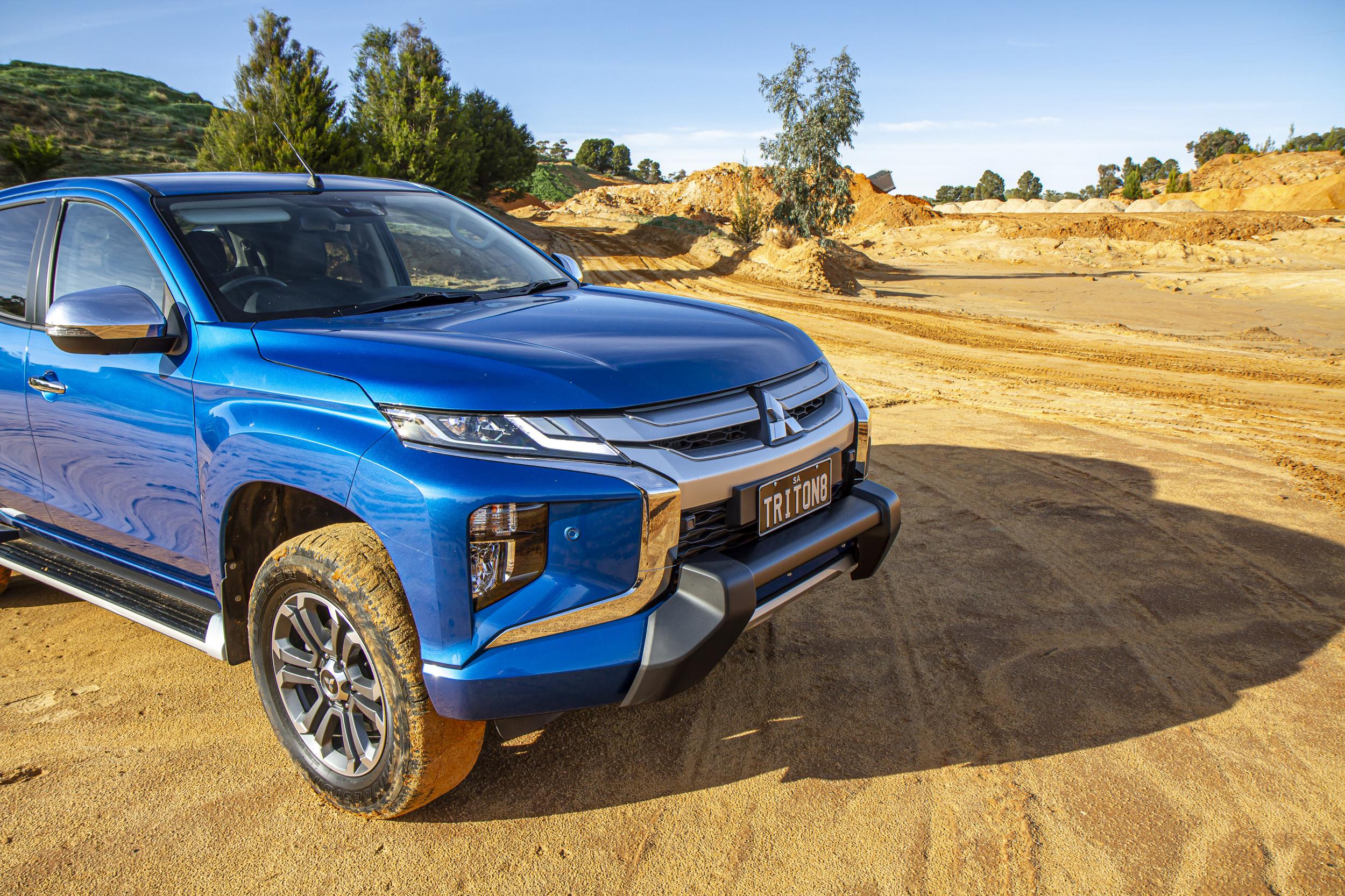
Pricing is up compared to the MY19 range, with the GLX+ costing an extra $1000, the GLS up by $650 and the GLS Premium up by $500. Since the release of the MY20 range, Mitsubishi has added another two variants, the new top of the pops GSR that starts from $52,990 driveaway and the Toby Price Edition that in manual form lists for $45,290 driveaway.
This time around I’m sampling the last of the MY19 GLS Premiums, which aside from the shinier sports bar is identical to the MY20 GLS Premium. The GLS Premium is, thankfully, only available with an automatic transmission and it retails for $50,290 driveaway. But don’t let any of the above pricing fool you, Mitsubishi is well known for having a sharp pencil when it comes to pricing and no-one pays full retail. A fact, that is in my opinion responsible for the perception among some, that the Triton is somehow an inferior product to the likes of Ranger and HiLux. More on that thought-bubble later.
Underneath the MR’s restyled panels lurk what is essentially a tweaked MQ Triton and we know the MQ Triton very well here at Loaded 4X4. The rear shocks have been upsized, but are still piddly little things, and I reckon I could just pick the improvement in rear suspension control.
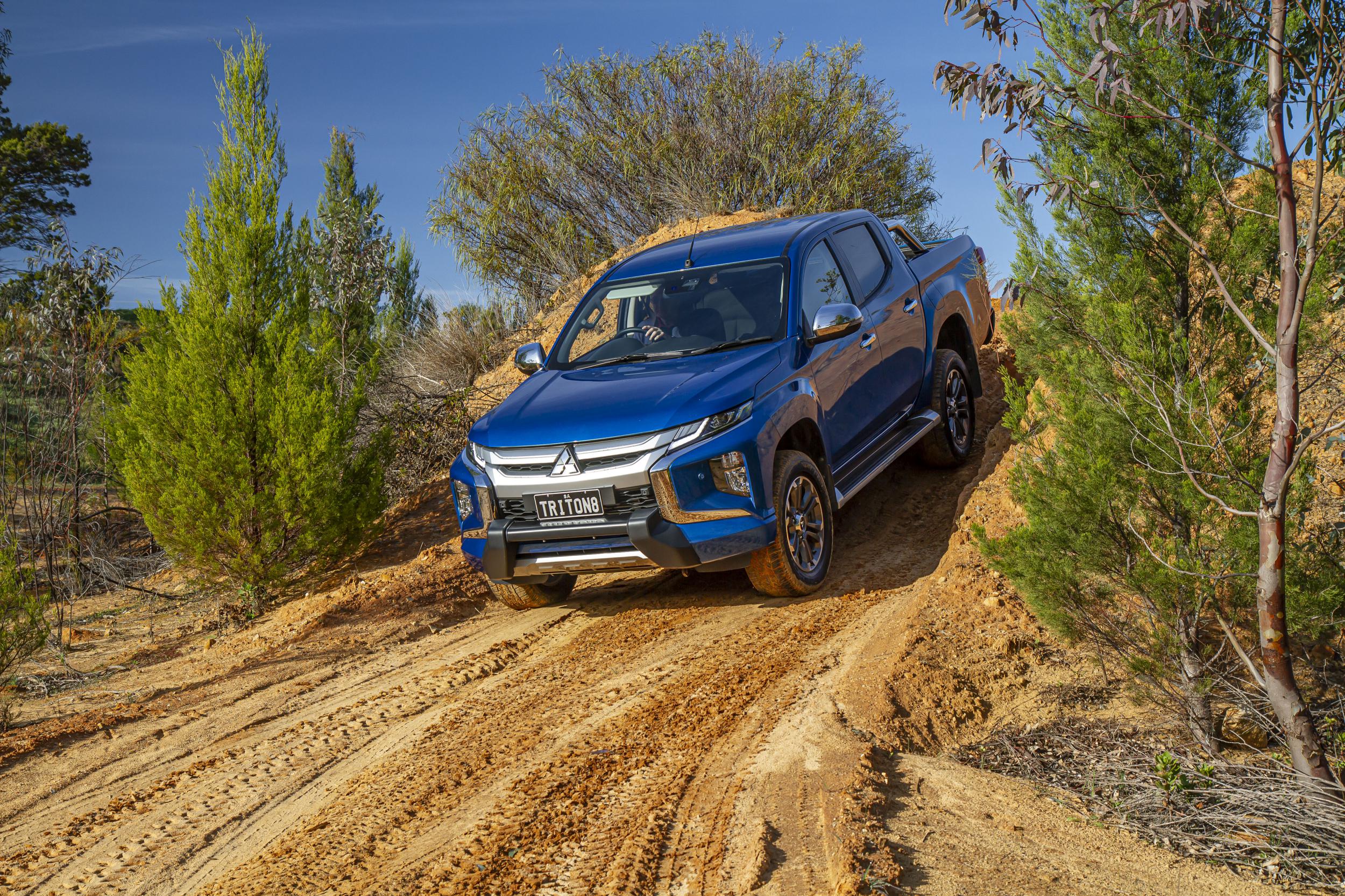
The MR, much like the MQ, is a decent handling dual-cab ute with a slightly firmer suspension setup than most in this class. Like the HiLux – but nowhere near as bad as the early N80 HiLux – the rear end feels a little too firm when there isn’t a load in the tray, making it a little jiggly at times, on the daily commute.
The Ranger, X-Class, Navara and Amarok have a more composed ride than the Triton, but the MR points and shoots on a winding hills road, with the best of them. Except of course the Ranger Raptor and the now defunct X-Class V6, which are in a league of their own, and priced accordingly.
The reality is that you’ll still, at some stage, be replacing the MR’s knackered stock suspension with something decent, and that’s when you’ll be able to dial out that mildly annoying rear-end jiggle.
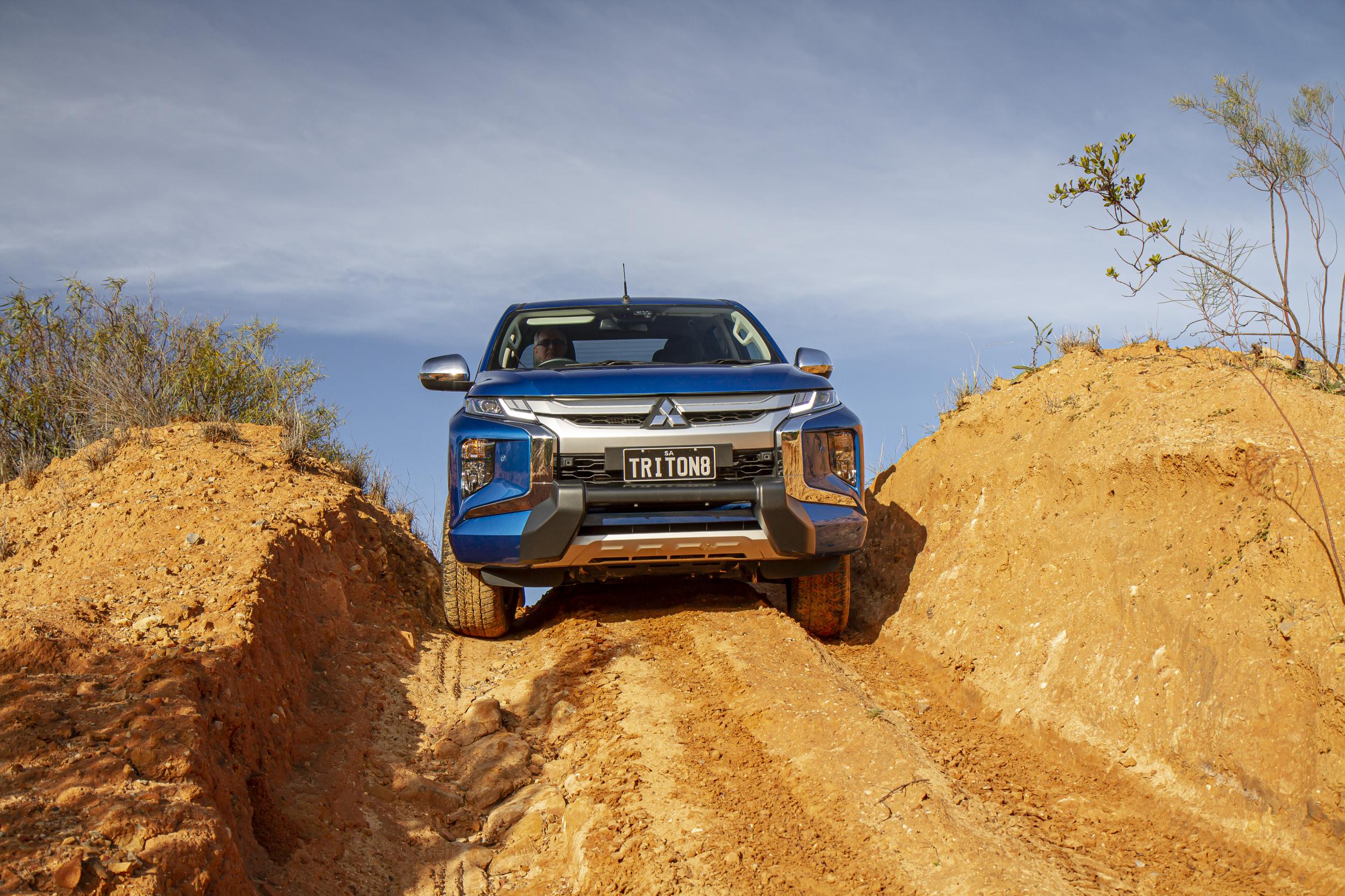
The Triton’s brakes were only ever adequate in the MQ. The undersized front discs didn’t get enough support from the crappy rear drum brakes, and they can cook and warp quicker than you can say “drum brakes suck”. Mitsubishi upsized the front brakes in the MR, and the result can be felt through the pedal, with improved feel and performance. Besides the restyle, my favourite MR upgrade is those larger front discs.
Again, like the MQ, the MR is surprisingly quiet on the highway. The all-alloy 2.4-litre MIVEC diesel doesn’t offer the same level of lazy willingness you’ll find in the 3.2-litre Ranger, or the more frenetic, on-again-off-again peaky punch of the also now-defunct Colorado, but it’s surprisingly willing and considerably more refined than either. The all-alloy engine construction means less weight over the front wheels and a level of balance and agility that is missing from its nose-heavy peers.
One of the more notable changes to the MR is the move from the excellent Aisin five-speed automatic to an Aisin six-speed automatic, although, it’s just the addition of a second overdrive ratio that marks the move from five to six gears. The motoring world was disappointed when they found out that the MR wasn’t getting the Pajero Sport’s impressive 8-speed box, as were we. The additional cost and weight of the 8-speed, in a vehicle that is cost and payload sensitive, would be the culprits.

Interestingly, Mitsubishi’s fuel consumption figures for the MR have increased over the MQ, so that squared-off front comes at a price. The official combined cycle fuel consumption figure for the GLS Premium auto, despite that extra overdrive ratio, is 8.6 L/100 compared to the MQ’s 7.6 L/100.
Regardless of which gearbox you opt for, and as mentioned above, the GLS and GLS Premium Tritons are equipped with Mitsubishi’s Super Select II transfer case, which means you can choose between 2WD (2H), AWD (4H), 4WD (4HLC) high-range and 4WD (4LLC) low-range. The LC denotes ‘locked centre differential’, and these are for off-road use only.
Now, I’ve never really understood the inclusion of a 2WD option and have proven that in the MQ Triton at least, it saves you bugger all fuel. There are good reasons never to use the 2WD option, including avoiding the interference of traction control in situations where you don’t want to be stranded in the path of oncoming traffic and taking some pressure off the two-piece rear tailshaft that in some Tritons can vibe a little when starting from a standstill.

Contrary to popular opinion, and there are some hilarious Facebook posts on this subject, you can put the Triton in 4H and leave it there forever, with no ill-effects or future warranty claims being created. It’s no different to any of the many permanent AWD vehicles in that regard, aside from giving you the option of being able to engage 2WD or for real off-road work, locking the centre differential in high and low range.
The dubious 2WD option aside, Super Select is one of the best drivetrains available in the 4X4 ute world. In GLS and GLS Premium trim, Super Select now includes a range of driver-selectable off-road modes as found in the Pajero Sport. These modes adjust traction control, engine output/throttle control and transmission settings to best deal with the chosen terrain type, be it gravel, mud/snow, sand or rock. Downhill descent control is now a standard feature in both GLS and GLS Premium. Our test track doesn’t provide many opportunities for testing this feature, and to be honest, I’d much rather be in control on steep descents, but that’s just a personal preference.
Off-road the MR carries over the MQ’s tendency to get hung up on stuff. Tritons run a big strong rear diff, so we are never surprised when we hang one on a rear diff pumpkin, and the MR is no different in this regard. It’s a situation not helped by the factory fitted 265/60/18 tyres.

We thought that new front end was going to be a real issue, but surprisingly its 27.5-degree approach angle saw it clear our erosion washout test with ease. Where both the MRs that we’ve tested came unstuck was in the rear. Mitsubishi cheated a little when they fitted a larger tray to the MN Triton back in late 2009, as they fitted it without altering the chassis and moving the rear axle further back. Aside from looking awkward, the rear overhang was increased considerably. There were also some chassis issues experienced if the MN was overloaded, an issue that was ‘engineered out of the MQ’ according to Mitsubishi, and it seems to be the case. That aside, it’s still a big bum, and the restyle appears to have reduced the rear departure angle in the real world. When I first tested the MR (a manual GLS) I couldn’t find a line through the washout that wouldn’t result in the rear bumper’s plastic cover being peeled off or at best, badly damaged, and as such, we opted, for the first time ever, to back out the way we came in.
That was my choice, and you’d be correct in assuming that if I’d ploughed on through, the MR would have made it, but I wasn’t prepared to damage a vehicle in my care for no real reason.
What this test did confirm for me, and this was especially obvious in the manual, was that the MR’s traction control is right up there with the best of them. It engaged surprisingly quickly and allowed the obstacle to be tackled slowly and carefully. Still not as good as a diff-lock but bloody hell, it’s getting close.

In the auto-only GLS Premium, you take all of that clutch nonsense out of the equation and replace it with smooth throttle pedal adjustability. As much as I adore driving my manual Defender, when it comes to modern, electronically controlled and well-sorted vehicles, you’d have to be a bit bonkers to buy a manual over an auto.
In my experience with the Triton, there is little to be gained in the way of fuel efficiency benefits, you avoid the issues that have plagued the Triton’s six-speed manual gearbox, you never have to change a clutch and driving on, and off-road is a better experience in nearly every way.
If you buy an MR and intend to play in the rough stuff, you’ll want to upsize tyres and fit a suspension lift to improve clearance. One thing I thought we knew from my MQ build is that the front bash plates are decently robust items, but a recent trip to the Flinders Ranges has proven that assumption wrong, so add aftermarket bash plates to the must-do list.
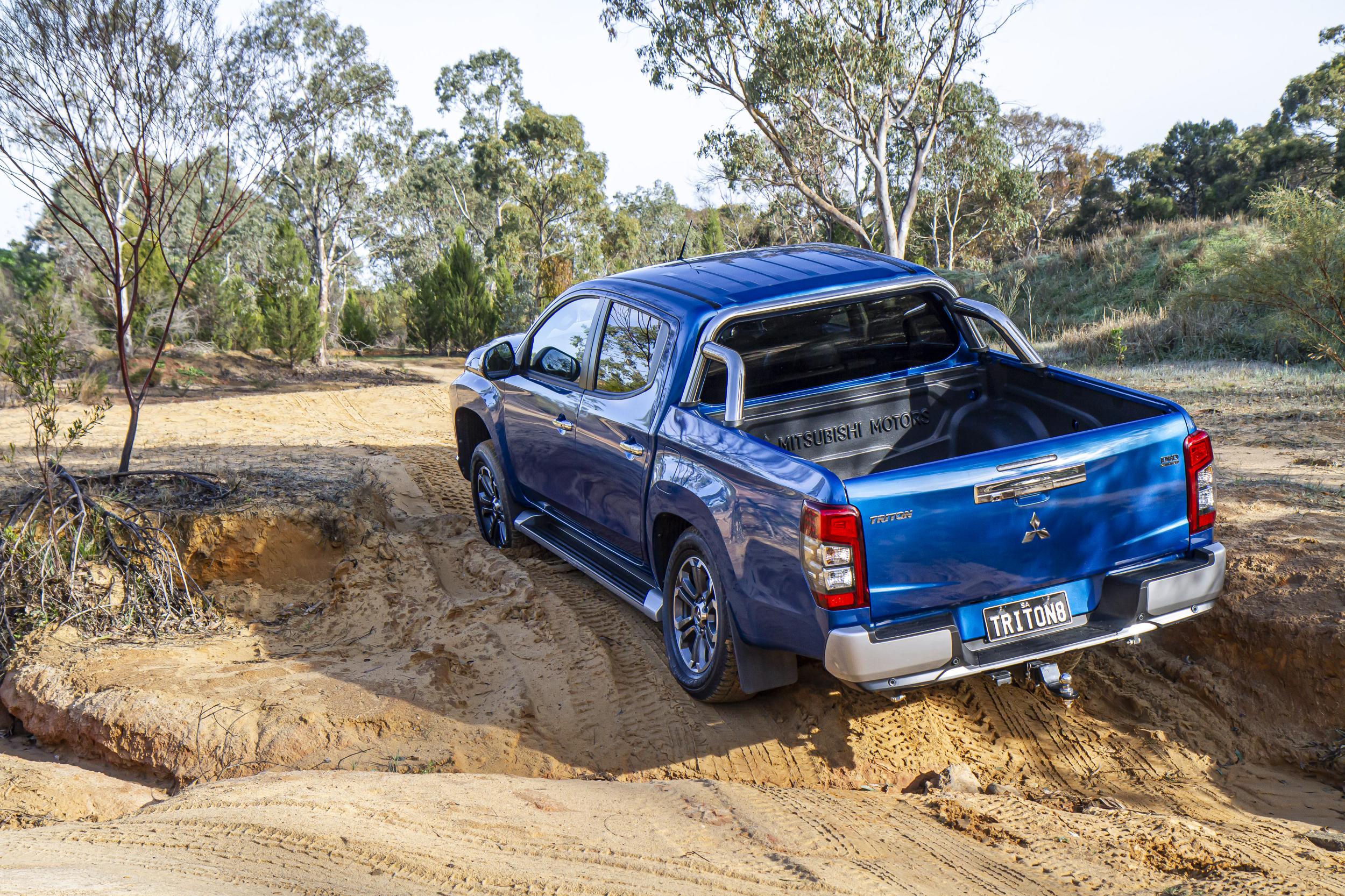
The Triton has two distinct advantages off-road, width and manoeuvrability. It’s now the narrowest of the Thai built 4X4 utes. For a family of five, with three strapping kids, that might be a disadvantage, for everyone else, there’s still plenty of room, and Triton’s rear seat accommodation, thanks to the controversial J-line styling of the rear cab, is relatively comfortable and spacious. Being narrower than most means that you can poke the Triton’s nose up narrow and overgrown tracks with a degree of confidence you won’t experience with most of the other utes.
That shorter wheelbase endows the Triton with a significantly smaller turning circle and makes it noticeably easier to pilot on High Country tracks. Drive a Triton and Ranger back to back in such country, and the Ranger feels like a block of flats compared to the Triton.
The GLS Premium’s interior is a nice place to spend some time. Mitsubishi has taken the already impressive MQ interior and improved the look and feel with a redesigned centre console, and upgraded dashboard features. The dashboard is one of the simplest and most functional out there, the steering wheel and its embedded controls are hard to fault, and the infotainment system sports the Apple Carplay / Android Auto twins and is clear and easy to use. I prefer round dials to the push-button type used to adjust the climate control settings, but you get used to not having anything to hold onto as you make adjustments.
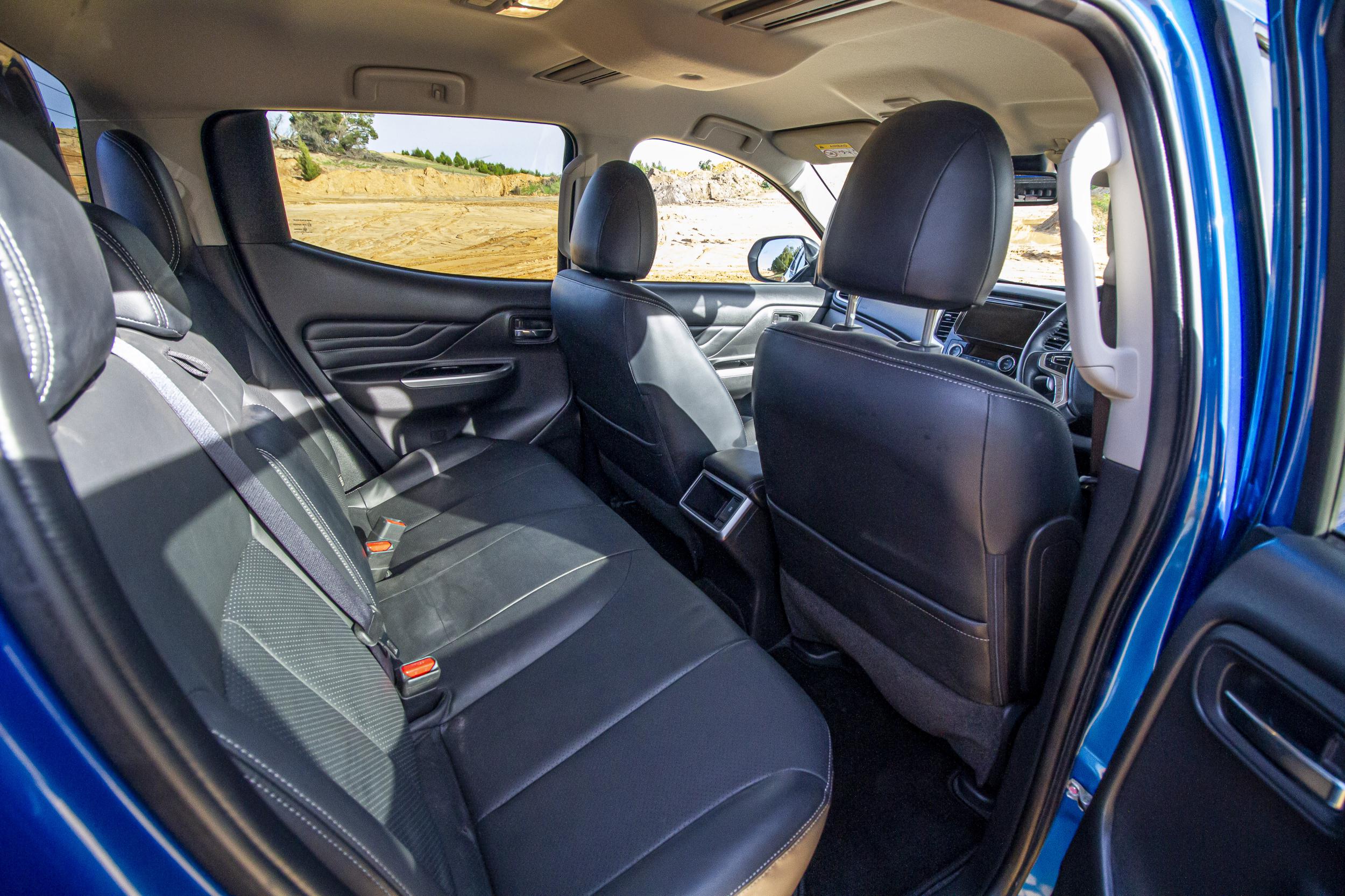
Now for the safety stuff. It’s got FCM, LDW, BSW, LCA, RCTA, UMS, AHB, ESS, EBA, HSA, HDC, ASC, TSA, ATC, ABS, EBD and BOS. Most of which I could happily live without but for those who prize a suite of auto catastrophe avoidance systems, the MR Triton is now the safety works burger of 4X4 utes, and if that’s your shizzle, then it’s the bargain buy of the century. This is the first Triton that will beep to remind you who’s really in control.
The MR Triton, particularly in GLS Premium form, is a good thing. Buy one, turf the stock suspension, give it a mild lift and some decent tyres, and it’ll take you most places that you’ll want to go, and it’ll now do it with a sense of style and a beep or three.
Triton has always sat in the shadow of HiLux and more recently the Ranger, and the rubbish I’ve read on social media about it being the cheap and nasty Thai ute option is utter nonsense. It’s up there with Ranger and HiLux in terms of quality and ability and comes with a stronger drivetrain than both of them.

Stick your head under and check out the rear diff size, then ponder the bulletproof Aisin automatic transmission – same as you’ll find in a HiLux – and then consider that in auto form, the Triton is mostly free of mechanical issues. No DPF dramas, no electrical gremlins, no torque converter issues, and no pattern of engine failures.
Off-road it’s more manoeuvrable than both, and is just as capable as both, arguably more so given its more svelte dimensions. On-road, well it’s an AWD if you want it to be and neither the Ranger nor the HiLux has an answer for that.
Now, if you’re towing a huge van, then realistically you’ll want to buy something with a larger engine than the Triton, and this is perhaps the one area in which the Ranger – in both 3.2-litre and 2.0-litre 10-speed bi-turbo guise – and the D-MAX have an advantage, although I’d argue that none of them should be towing 3.5 tonnes of anything.
More engine capacity or more useful non-overdrive gear ratios mean lower EGTs and better extreme towing performance. For towing boats and regular-sized vans, the Triton will do the job just fine.
Right now, this is the 4X4 ute I’d buy.
But Wait, There’s More…
CSA Ridgeline – NEW Suzuki Jimny Fitment
I’m smitten with the JB74 Suzuki Jimny, a vehicle that despite its tiny size is absolutely huge on fun and [...]
Sizing It Up – CSA Raptor v MR Triton
The CSA Raptor wheels have been on the MitsiMates Triton for over 6 months now, and we’re still feeling the [...]
Matty Hill Chooses The Konig Hypergram
We’re excited! Our Konig Hypergram flow formed wheels have recently had their debut under Matty Hill’s S15 drift car monster [...]
2022 Isuzu D-MAX LS-U+ Review
I can still remember the first current generation D-MAX I drove. It was winter in 2020 (I think) and we’d [...]
2023 Next-Gen Ranger By ARB
Built for touring, this ARB Next-Gen Ranger build showcases the breadth of products that the off-road brand has created for [...]
2023 Next-Gen Everest By ARB
We all know that the right wheels are an integral component of any serious vehicle build, and this Ford Everest, [...]
The last MR Triton I reviewed was an MY19 GLS with a six-speed manual gearbox and I wrote at the time, in a round-a-bout sort of way, ‘great 4X4 but I wouldn’t buy the manual’.
Since then the MY20 MR Triton range has been released, with a handful of upgrades for the mid-spec models that has seen a rear diff lock added to the middle of the range GLX+ and GLS, and the air-recirculating roof pod found in the GLS and GLS Premium added to the GLX+.
Mitsubishi’s awesome Super Select system that offers drivers the choice of AWD on hard surfaces and 4WD in off-road situations, has not yet filtered down to the GLX+, so if you want Super Select, and why wouldn’t you, you’ll have to stump up for the GLS or GLS Premium.
Other MY20 changes include the addition of a black sports bar to the GLS Premium and push-button start for the GLS. Balancing the books for the GLS, to a degree, sees the omission of the sports bar, a cosmetic item that really has little use to most buyers anyway.

Pricing is up compared to the MY19 range, with the GLX+ costing an extra $1000, the GLS up by $650 and the GLS Premium up by $500. Since the release of the MY20 range, Mitsubishi has added another two variants, the new top of the pops GSR that starts from $52,990 driveaway and the Toby Price Edition that in manual form lists for $45,290 driveaway.
This time around I’m sampling the last of the MY19 GLS Premiums, which aside from the shinier sports bar is identical to the MY20 GLS Premium. The GLS Premium is, thankfully, only available with an automatic transmission and it retails for $50,290 driveaway. But don’t let any of the above pricing fool you, Mitsubishi is well known for having a sharp pencil when it comes to pricing and no-one pays full retail. A fact, that is in my opinion responsible for the perception among some, that the Triton is somehow an inferior product to the likes of Ranger and HiLux. More on that thought-bubble later.
Underneath the MR’s restyled panels lurk what is essentially a tweaked MQ Triton and we know the MQ Triton very well here at Loaded 4X4. The rear shocks have been upsized, but are still piddly little things, and I reckon I could just pick the improvement in rear suspension control.

The MR, much like the MQ, is a decent handling dual-cab ute with a slightly firmer suspension setup than most in this class. Like the HiLux – but nowhere near as bad as the early N80 HiLux – the rear end feels a little too firm when there isn’t a load in the tray, making it a little jiggly at times, on the daily commute.
The Ranger, X-Class, Navara and Amarok have a more composed ride than the Triton, but the MR points and shoots on a winding hills road, with the best of them. Except of course the Ranger Raptor and the now defunct X-Class V6, which are in a league of their own, and priced accordingly.
The reality is that you’ll still, at some stage, be replacing the MR’s knackered stock suspension with something decent, and that’s when you’ll be able to dial out that mildly annoying rear-end jiggle.

The Triton’s brakes were only ever adequate in the MQ. The undersized front discs didn’t get enough support from the crappy rear drum brakes, and they can cook and warp quicker than you can say “drum brakes suck”. Mitsubishi upsized the front brakes in the MR, and the result can be felt through the pedal, with improved feel and performance. Besides the restyle, my favourite MR upgrade is those larger front discs.
Again, like the MQ, the MR is surprisingly quiet on the highway. The all-alloy 2.4-litre MIVEC diesel doesn’t offer the same level of lazy willingness you’ll find in the 3.2-litre Ranger, or the more frenetic, on-again-off-again peaky punch of the also now-defunct Colorado, but it’s surprisingly willing and considerably more refined than either. The all-alloy engine construction means less weight over the front wheels and a level of balance and agility that is missing from its nose-heavy peers.
One of the more notable changes to the MR is the move from the excellent Aisin five-speed automatic to an Aisin six-speed automatic, although, it’s just the addition of a second overdrive ratio that marks the move from five to six gears. The motoring world was disappointed when they found out that the MR wasn’t getting the Pajero Sport’s impressive 8-speed box, as were we. The additional cost and weight of the 8-speed, in a vehicle that is cost and payload sensitive, would be the culprits.

Interestingly, Mitsubishi’s fuel consumption figures for the MR have increased over the MQ, so that squared-off front comes at a price. The official combined cycle fuel consumption figure for the GLS Premium auto, despite that extra overdrive ratio, is 8.6 L/100 compared to the MQ’s 7.6 L/100.
Regardless of which gearbox you opt for, and as mentioned above, the GLS and GLS Premium Tritons are equipped with Mitsubishi’s Super Select II transfer case, which means you can choose between 2WD (2H), AWD (4H), 4WD (4HLC) high-range and 4WD (4LLC) low-range. The LC denotes ‘locked centre differential’, and these are for off-road use only.
Now, I’ve never really understood the inclusion of a 2WD option and have proven that in the MQ Triton at least, it saves you bugger all fuel. There are good reasons never to use the 2WD option, including avoiding the interference of traction control in situations where you don’t want to be stranded in the path of oncoming traffic and taking some pressure off the two-piece rear tailshaft that in some Tritons can vibe a little when starting from a standstill.

Contrary to popular opinion, and there are some hilarious Facebook posts on this subject, you can put the Triton in 4H and leave it there forever, with no ill-effects or future warranty claims being created. It’s no different to any of the many permanent AWD vehicles in that regard, aside from giving you the option of being able to engage 2WD or for real off-road work, locking the centre differential in high and low range.
The dubious 2WD option aside, Super Select is one of the best drivetrains available in the 4X4 ute world. In GLS and GLS Premium trim, Super Select now includes a range of driver-selectable off-road modes as found in the Pajero Sport. These modes adjust traction control, engine output/throttle control and transmission settings to best deal with the chosen terrain type, be it gravel, mud/snow, sand or rock. Downhill descent control is now a standard feature in both GLS and GLS Premium. Our test track doesn’t provide many opportunities for testing this feature, and to be honest, I’d much rather be in control on steep descents, but that’s just a personal preference.
Off-road the MR carries over the MQ’s tendency to get hung up on stuff. Tritons run a big strong rear diff, so we are never surprised when we hang one on a rear diff pumpkin, and the MR is no different in this regard. It’s a situation not helped by the factory fitted 265/60/18 tyres.

We thought that new front end was going to be a real issue, but surprisingly its 27.5-degree approach angle saw it clear our erosion washout test with ease. Where both the MRs that we’ve tested came unstuck was in the rear. Mitsubishi cheated a little when they fitted a larger tray to the MN Triton back in late 2009, as they fitted it without altering the chassis and moving the rear axle further back. Aside from looking awkward, the rear overhang was increased considerably. There were also some chassis issues experienced if the MN was overloaded, an issue that was ‘engineered out of the MQ’ according to Mitsubishi, and it seems to be the case. That aside, it’s still a big bum, and the restyle appears to have reduced the rear departure angle in the real world. When I first tested the MR (a manual GLS) I couldn’t find a line through the washout that wouldn’t result in the rear bumper’s plastic cover being peeled off or at best, badly damaged, and as such, we opted, for the first time ever, to back out the way we came in.
That was my choice, and you’d be correct in assuming that if I’d ploughed on through, the MR would have made it, but I wasn’t prepared to damage a vehicle in my care for no real reason.
What this test did confirm for me, and this was especially obvious in the manual, was that the MR’s traction control is right up there with the best of them. It engaged surprisingly quickly and allowed the obstacle to be tackled slowly and carefully. Still not as good as a diff-lock but bloody hell, it’s getting close.

In the auto-only GLS Premium, you take all of that clutch nonsense out of the equation and replace it with smooth throttle pedal adjustability. As much as I adore driving my manual Defender, when it comes to modern, electronically controlled and well-sorted vehicles, you’d have to be a bit bonkers to buy a manual over an auto.
In my experience with the Triton, there is little to be gained in the way of fuel efficiency benefits, you avoid the issues that have plagued the Triton’s six-speed manual gearbox, you never have to change a clutch and driving on, and off-road is a better experience in nearly every way.
If you buy an MR and intend to play in the rough stuff, you’ll want to upsize tyres and fit a suspension lift to improve clearance. One thing I thought we knew from my MQ build is that the front bash plates are decently robust items, but a recent trip to the Flinders Ranges has proven that assumption wrong, so add aftermarket bash plates to the must-do list.

The Triton has two distinct advantages off-road, width and manoeuvrability. It’s now the narrowest of the Thai built 4X4 utes. For a family of five, with three strapping kids, that might be a disadvantage, for everyone else, there’s still plenty of room, and Triton’s rear seat accommodation, thanks to the controversial J-line styling of the rear cab, is relatively comfortable and spacious. Being narrower than most means that you can poke the Triton’s nose up narrow and overgrown tracks with a degree of confidence you won’t experience with most of the other utes.
That shorter wheelbase endows the Triton with a significantly smaller turning circle and makes it noticeably easier to pilot on High Country tracks. Drive a Triton and Ranger back to back in such country, and the Ranger feels like a block of flats compared to the Triton.
The GLS Premium’s interior is a nice place to spend some time. Mitsubishi has taken the already impressive MQ interior and improved the look and feel with a redesigned centre console, and upgraded dashboard features. The dashboard is one of the simplest and most functional out there, the steering wheel and its embedded controls are hard to fault, and the infotainment system sports the Apple Carplay / Android Auto twins and is clear and easy to use. I prefer round dials to the push-button type used to adjust the climate control settings, but you get used to not having anything to hold onto as you make adjustments.

Now for the safety stuff. It’s got FCM, LDW, BSW, LCA, RCTA, UMS, AHB, ESS, EBA, HSA, HDC, ASC, TSA, ATC, ABS, EBD and BOS. Most of which I could happily live without but for those who prize a suite of auto catastrophe avoidance systems, the MR Triton is now the safety works burger of 4X4 utes, and if that’s your shizzle, then it’s the bargain buy of the century. This is the first Triton that will beep to remind you who’s really in control.
The MR Triton, particularly in GLS Premium form, is a good thing. Buy one, turf the stock suspension, give it a mild lift and some decent tyres, and it’ll take you most places that you’ll want to go, and it’ll now do it with a sense of style and a beep or three.
Triton has always sat in the shadow of HiLux and more recently the Ranger, and the rubbish I’ve read on social media about it being the cheap and nasty Thai ute option is utter nonsense. It’s up there with Ranger and HiLux in terms of quality and ability and comes with a stronger drivetrain than both of them.

Stick your head under and check out the rear diff size, then ponder the bulletproof Aisin automatic transmission – same as you’ll find in a HiLux – and then consider that in auto form, the Triton is mostly free of mechanical issues. No DPF dramas, no electrical gremlins, no torque converter issues, and no pattern of engine failures.
Off-road it’s more manoeuvrable than both, and is just as capable as both, arguably more so given its more svelte dimensions. On-road, well it’s an AWD if you want it to be and neither the Ranger nor the HiLux has an answer for that.
Now, if you’re towing a huge van, then realistically you’ll want to buy something with a larger engine than the Triton, and this is perhaps the one area in which the Ranger – in both 3.2-litre and 2.0-litre 10-speed bi-turbo guise – and the D-MAX have an advantage, although I’d argue that none of them should be towing 3.5 tonnes of anything.
More engine capacity or more useful non-overdrive gear ratios mean lower EGTs and better extreme towing performance. For towing boats and regular-sized vans, the Triton will do the job just fine.
Right now, this is the 4X4 ute I’d buy.
But Wait, There’s More…
CSA Ridgeline – NEW Suzuki Jimny Fitment
I’m smitten with the JB74 Suzuki Jimny, a vehicle that despite its tiny size is absolutely huge on fun and [...]
Sizing It Up – CSA Raptor v MR Triton
The CSA Raptor wheels have been on the MitsiMates Triton for over 6 months now, and we’re still feeling the [...]
Matty Hill Chooses The Konig Hypergram
We’re excited! Our Konig Hypergram flow formed wheels have recently had their debut under Matty Hill’s S15 drift car monster [...]

